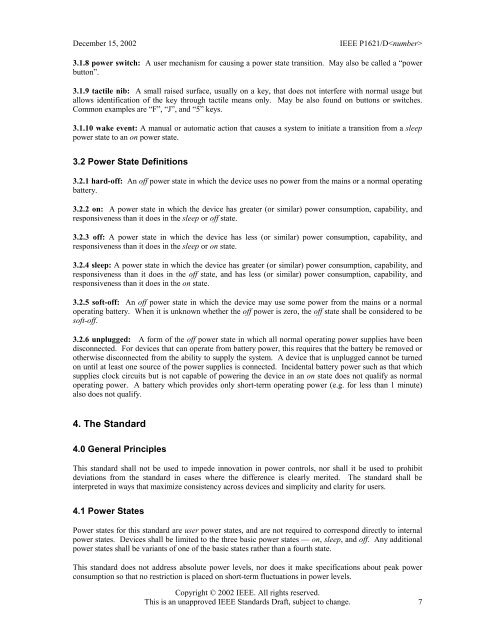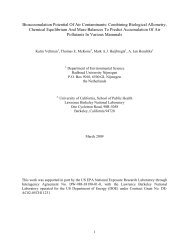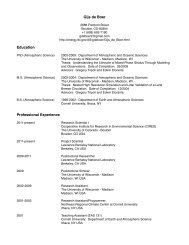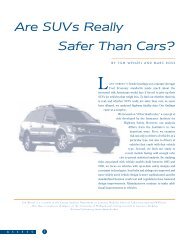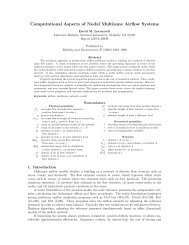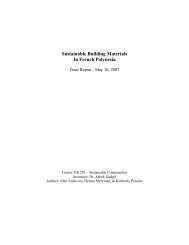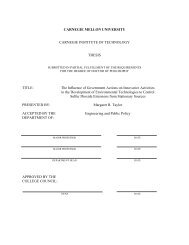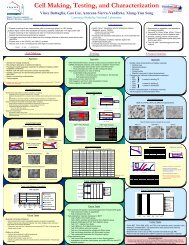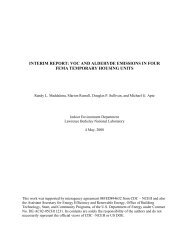Draft Standard for User Interface Elements in Power Control of ...
Draft Standard for User Interface Elements in Power Control of ...
Draft Standard for User Interface Elements in Power Control of ...
You also want an ePaper? Increase the reach of your titles
YUMPU automatically turns print PDFs into web optimized ePapers that Google loves.
December 15, 2002 IEEE P1621/D<br />
3.1.8 power switch: A user mechanism <strong>for</strong> caus<strong>in</strong>g a power state transition. May also be called a “power<br />
button”.<br />
3.1.9 tactile nib: A small raised surface, usually on a key, that does not <strong>in</strong>terfere with normal usage but<br />
allows identification <strong>of</strong> the key through tactile means only. May be also found on buttons or switches.<br />
Common examples are “F”, “J”, and “5” keys.<br />
3.1.10 wake event: A manual or automatic action that causes a system to <strong>in</strong>itiate a transition from a sleep<br />
power state to an on power state.<br />
3.2 <strong>Power</strong> State Def<strong>in</strong>itions<br />
3.2.1 hard-<strong>of</strong>f: An <strong>of</strong>f power state <strong>in</strong> which the device uses no power from the ma<strong>in</strong>s or a normal operat<strong>in</strong>g<br />
battery.<br />
3.2.2 on: A power state <strong>in</strong> which the device has greater (or similar) power consumption, capability, and<br />
responsiveness than it does <strong>in</strong> the sleep or <strong>of</strong>f state.<br />
3.2.3 <strong>of</strong>f: A power state <strong>in</strong> which the device has less (or similar) power consumption, capability, and<br />
responsiveness than it does <strong>in</strong> the sleep or on state.<br />
3.2.4 sleep: A power state <strong>in</strong> which the device has greater (or similar) power consumption, capability, and<br />
responsiveness than it does <strong>in</strong> the <strong>of</strong>f state, and has less (or similar) power consumption, capability, and<br />
responsiveness than it does <strong>in</strong> the on state.<br />
3.2.5 s<strong>of</strong>t-<strong>of</strong>f: An <strong>of</strong>f power state <strong>in</strong> which the device may use some power from the ma<strong>in</strong>s or a normal<br />
operat<strong>in</strong>g battery. When it is unknown whether the <strong>of</strong>f power is zero, the <strong>of</strong>f state shall be considered to be<br />
s<strong>of</strong>t-<strong>of</strong>f.<br />
3.2.6 unplugged: A <strong>for</strong>m <strong>of</strong> the <strong>of</strong>f power state <strong>in</strong> which all normal operat<strong>in</strong>g power supplies have been<br />
disconnected. For devices that can operate from battery power, this requires that the battery be removed or<br />
otherwise disconnected from the ability to supply the system. A device that is unplugged cannot be turned<br />
on until at least one source <strong>of</strong> the power supplies is connected. Incidental battery power such as that which<br />
supplies clock circuits but is not capable <strong>of</strong> power<strong>in</strong>g the device <strong>in</strong> an on state does not qualify as normal<br />
operat<strong>in</strong>g power. A battery which provides only short-term operat<strong>in</strong>g power (e.g. <strong>for</strong> less than 1 m<strong>in</strong>ute)<br />
also does not qualify.<br />
4. The <strong>Standard</strong><br />
4.0 General Pr<strong>in</strong>ciples<br />
This standard shall not be used to impede <strong>in</strong>novation <strong>in</strong> power controls, nor shall it be used to prohibit<br />
deviations from the standard <strong>in</strong> cases where the difference is clearly merited. The standard shall be<br />
<strong>in</strong>terpreted <strong>in</strong> ways that maximize consistency across devices and simplicity and clarity <strong>for</strong> users.<br />
4.1 <strong>Power</strong> States<br />
<strong>Power</strong> states <strong>for</strong> this standard are user power states, and are not required to correspond directly to <strong>in</strong>ternal<br />
power states. Devices shall be limited to the three basic power states — on, sleep, and <strong>of</strong>f. Any additional<br />
power states shall be variants <strong>of</strong> one <strong>of</strong> the basic states rather than a fourth state.<br />
This standard does not address absolute power levels, nor does it make specifications about peak power<br />
consumption so that no restriction is placed on short-term fluctuations <strong>in</strong> power levels.<br />
Copyright © 2002 IEEE. All rights reserved.<br />
This is an unapproved IEEE <strong>Standard</strong>s <strong>Draft</strong>, subject to change. 7


